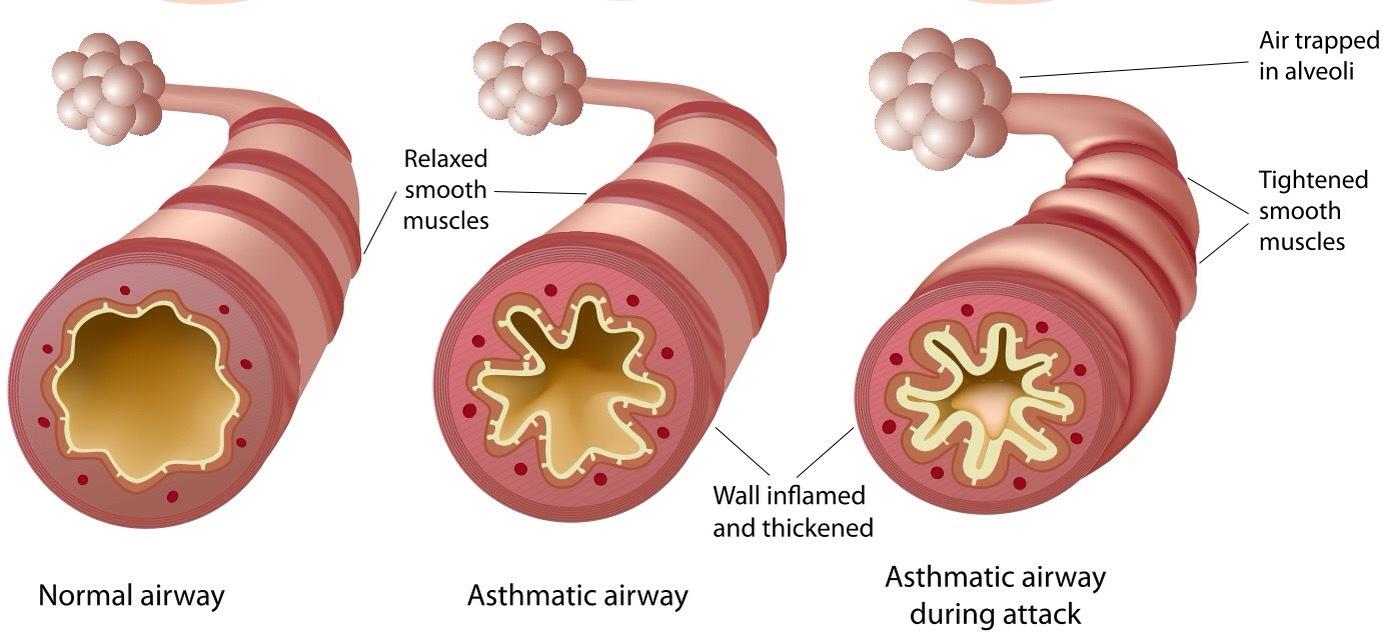Asthma is a manageable condition, but in the absence of prompt intervention, it can become fatal. Recognising early signs of an asthma attack is critical to avoiding escalation. Understanding physiological changes and individual symptom patterns is the foundation of emergency prevention.
Asthma-Linked Mortality in New Zealand
According to Asthma Foundation, asthma causes 93 deaths in New Zealand each year and is one of the most common hospitalisation causes in children. Despite improved public awareness, fluctuations in annual mortality rates indicate inconsistent asthma management. Knowing early warning signs remains essential to reducing avoidable fatalities.
Physiological Mechanism During Attack
An asthma attack is characterised by bronchial muscle contraction, inflammation of the airway lining, and secretion of thick mucus. These factors reduce airflow and cause breathing distress. Recognition of these internal mechanisms enhances pattern recognition in real-time symptoms.

Image source: Ophea.net
Observable Warning Signs
Typical signs of asthma attack onset include:
- Audible wheezing
- Shortness of breath during mild exertion
- Tightness in the chest area
- Repetitive coughing fits
- Breathing difficulty, particularly at night or early morning
- Persistent dry cough
Severe Attack Indicators Requiring Emergency Response
If any of the following signs present, immediate activation of emergency services (111) is required:
- Severe breathlessness with little to no wheezing
- Speech restricted to one or two words per breath
- Significant anxiety or visible distress
- Blue discolouration of lips (or pallor)
- Use of accessory muscles (shoulders, ribs) for breathing
- Rapid symptom escalation or reliever medication needed more frequently than every 2 hours
In Paediatric Patients
- Restlessness, drowsiness, or difficulty settling
- Inability to eat or drink due to shortness of breath
- Vomiting induced by severe coughing
Strategic Preparation and Risk Reduction
Identification of personalised symptom profiles through consultation with medical professionals is key. An individualised written asthma action plan should be developed and routinely reviewed. This reduces attack frequency and severity, and lowers hospitalisation risk.
Preparedness Across Contexts
Workplaces should maintain documented asthma action plans for affected individuals. Emergency readiness includes familiarity with co-worker symptoms and access to reliever devices. Families should also engage in shared understanding of individual triggers and symptom escalation cues.
Applied Learning: Structured Online Training
To move beyond passive awareness, formal training is required. Our Asthma First Aid course provides a complete knowledge foundation in symptom recognition and emergency protocol. For organisational compliance and strategy, the Workplace Asthma Management and First Aid course includes instruction on asthma risk assessment and emergency planning. For environments with compounded allergic risk, Workplace Asthma and Anaphylaxis Management and First Aid extends training scope.
Each course is fully online, accessible from any location, and includes certification for compliance or personal readiness. Equip yourself with the capability to act decisively and prevent critical deterioration during asthma emergencies.




